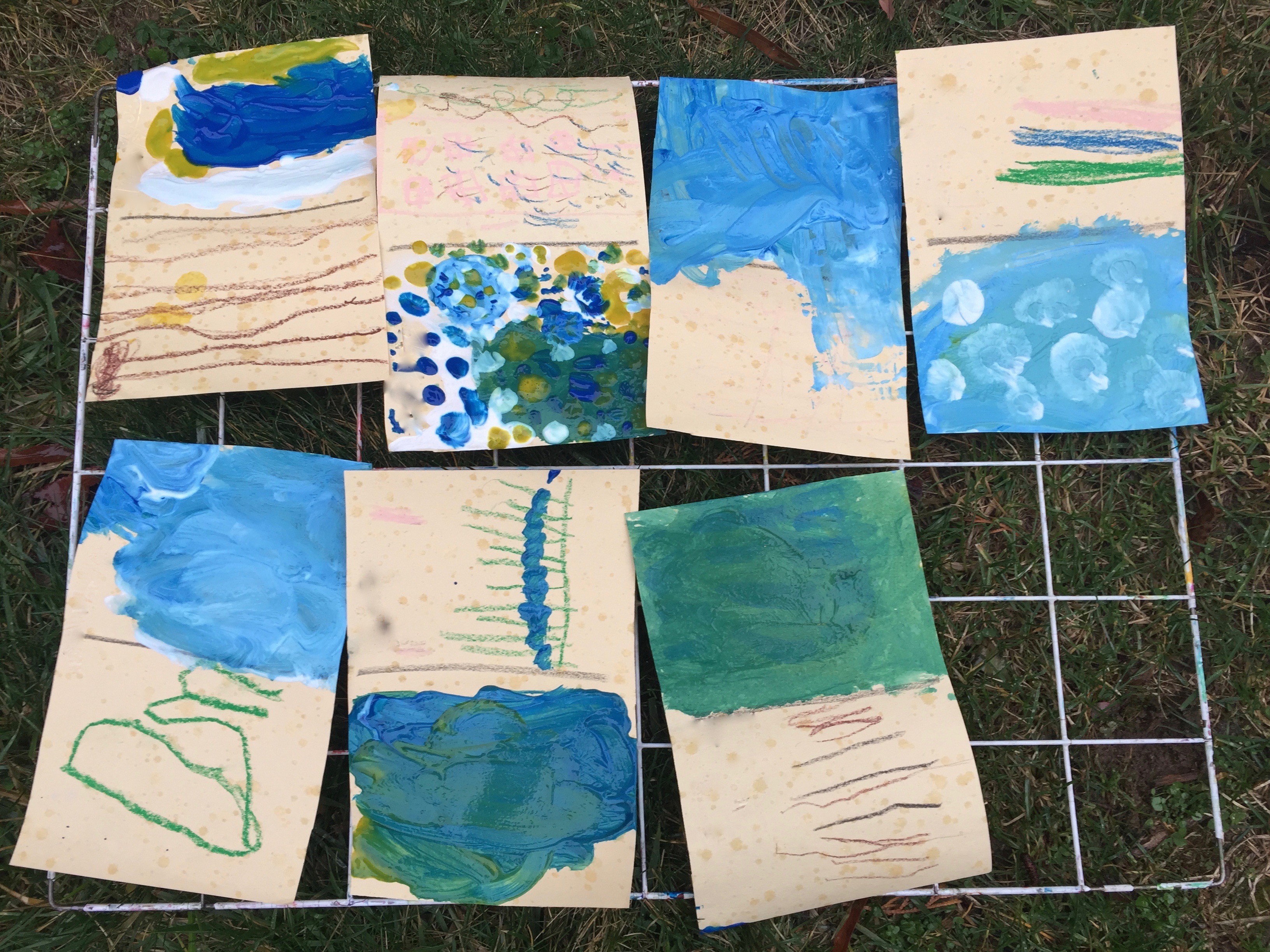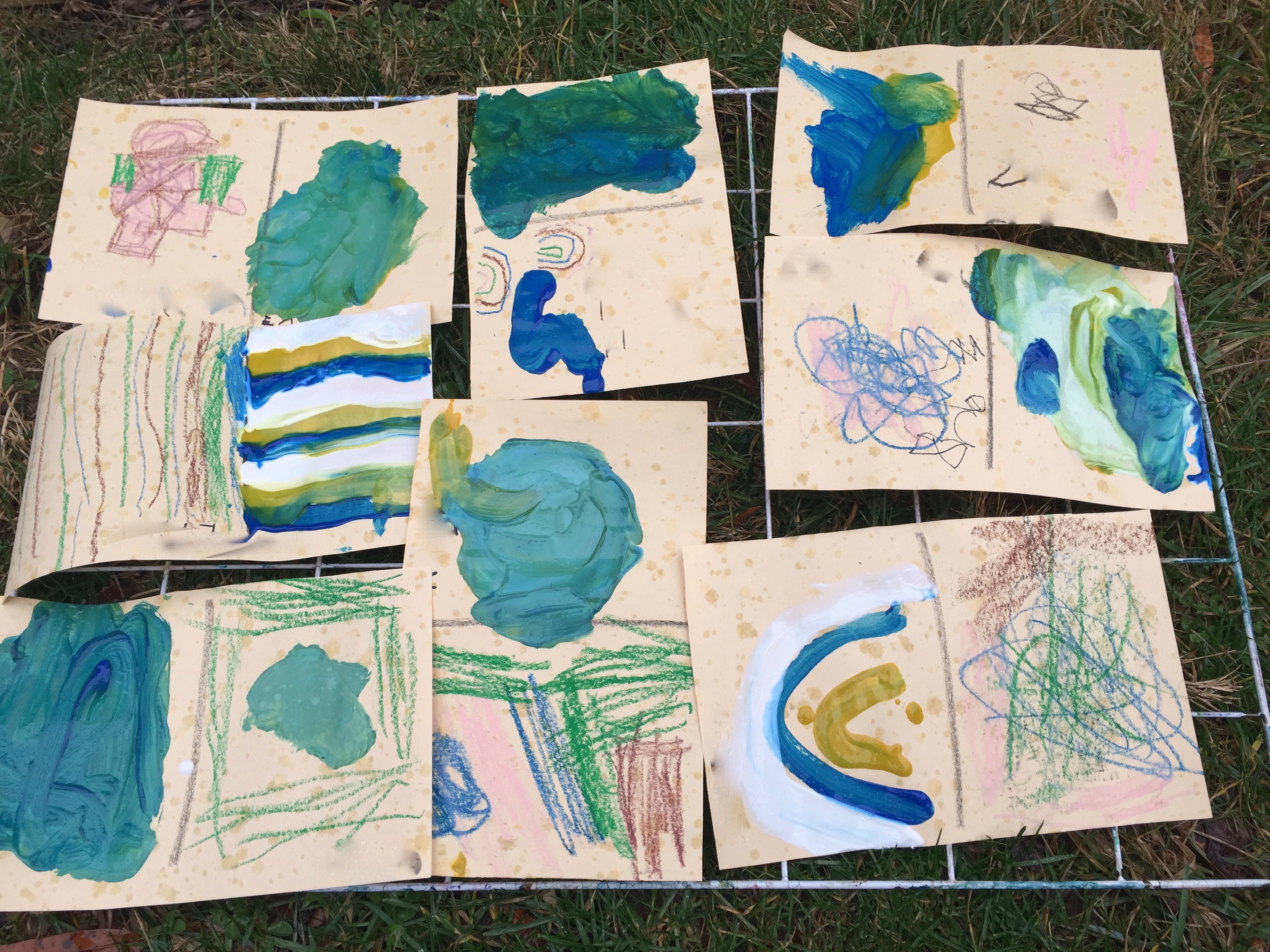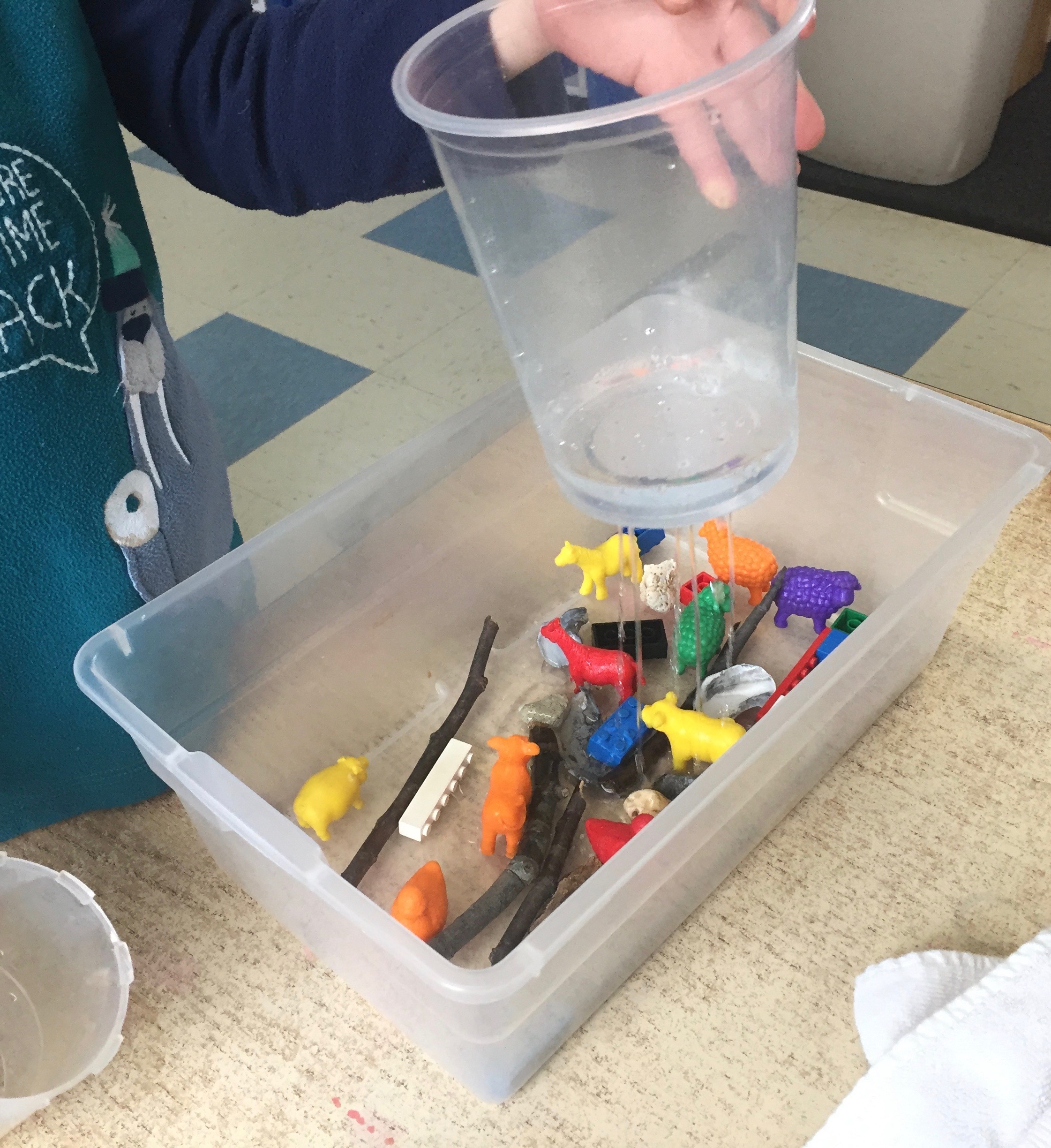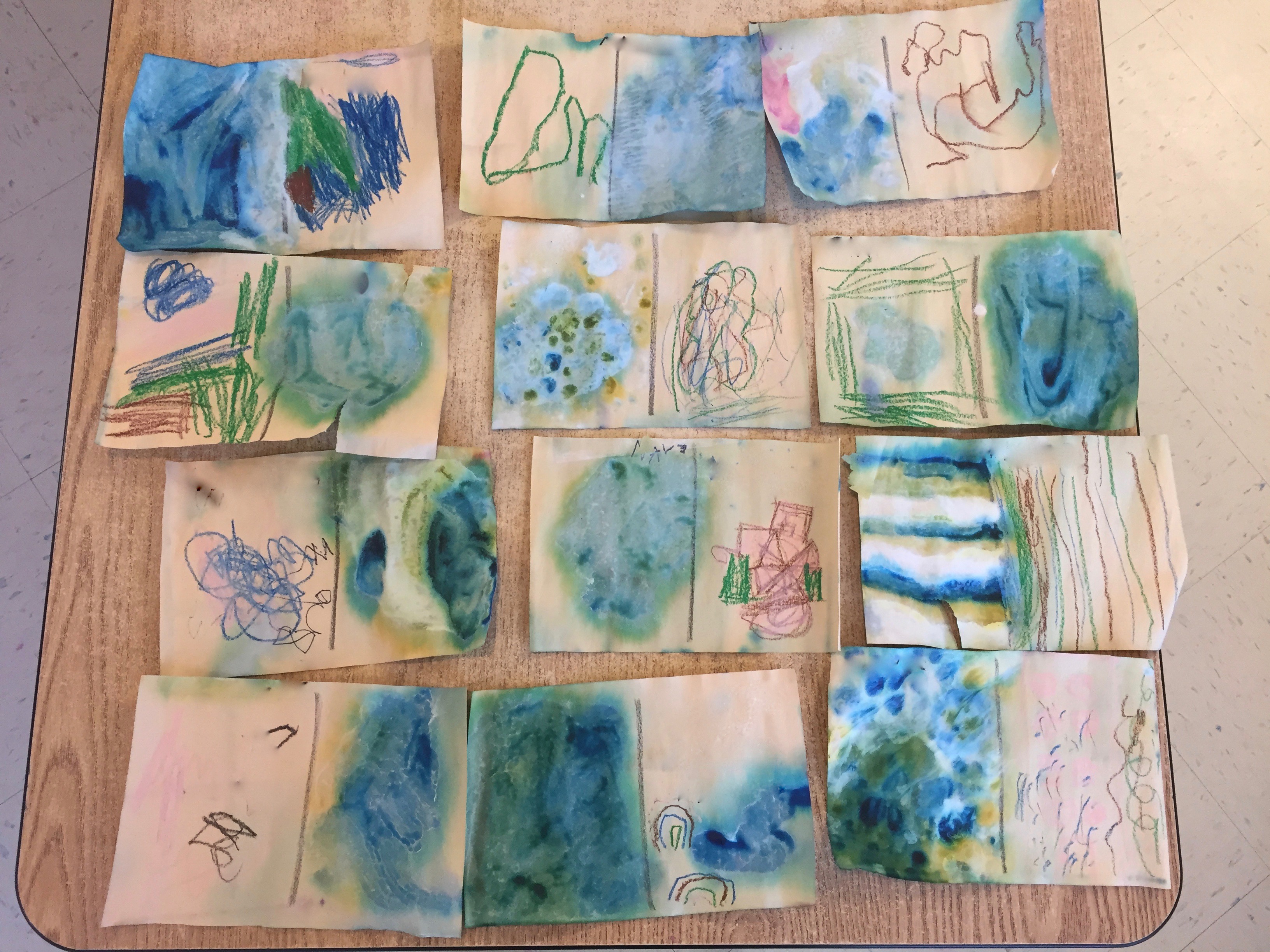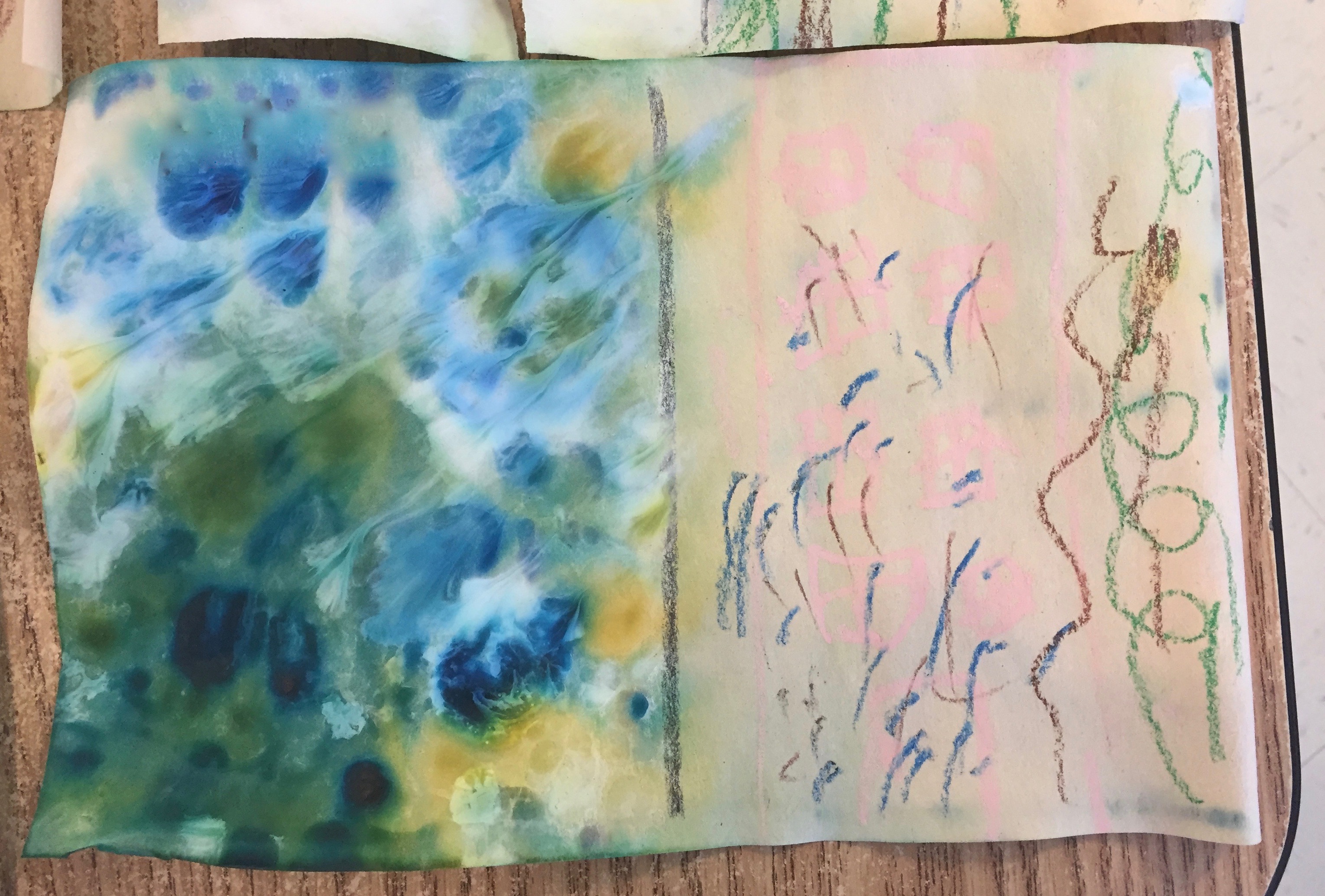Early Childhood / Preschool Blog
Using rain to manipulate art media, and modeling rain
By Peggy Ashbrook
Posted on 2020-02-15
A day where the rain had lasted so long that the playground became soupy led to an investigation of the properties of art media—tempera paint and oil pastels. As a science investigation we (most of us) followed my procedure of using tempera paint on one half of a page and oil pastels on the other half.
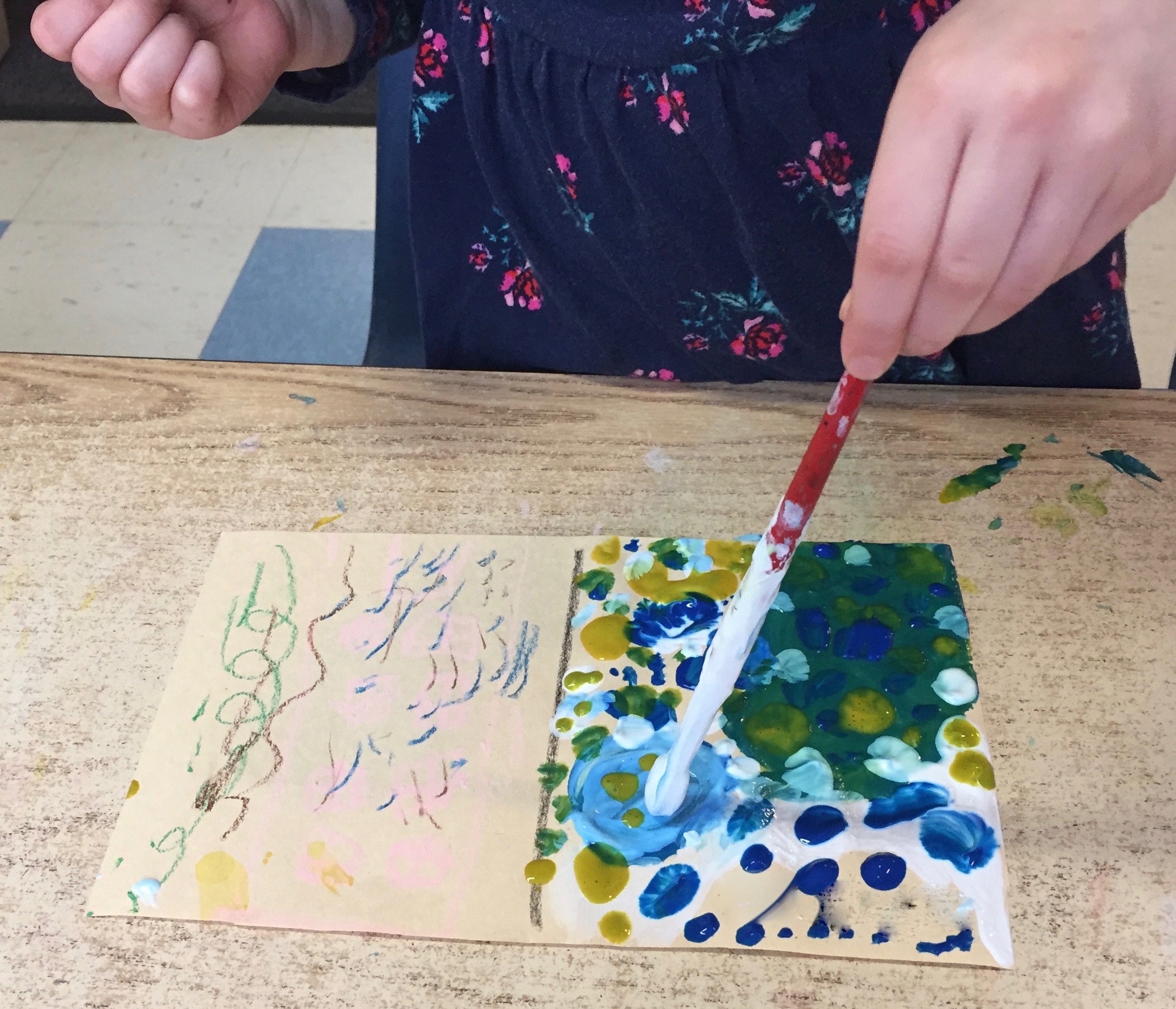
What the children designed with the media was their choice. As they worked I asked children to compare the two media—how well did the media stick to the paper, what kinds of lines could they make with either media, were the media wet or dry, and if they had a preference for hand-and-stick of pastel or paint-on-brush.
Most of the children, ages 3.5-5 years old, did not draw “anything,” perhaps because it wasn’t truly their creation, simply an investigation that I suggested with certain media. They applied the media in layers, adding colors until they decided they were finished. A few interests were revealed in the children’s work: math (shapes and patterns), spreading paint, mixing colors, the freedom to “scribble scrabble,” and rainbows, as well as stylistic differences.
In a separate activity I provided some plastic quart containers with holes in the bottom to model rain, or to just see what happens when we drop water over objects: plastic toys, sticks, and shells. Children had fun controlling the dripping flow of water (ESS2.C The roles of water in Earth’s surface processes). We had small towels at hand to absorb spills as children practiced pouring.
One child observed the displacement of water, something I had not planned on but a wonderful opportunity to discuss what she thought.
Another child observed that when most of the water had dripped out, a little water remained in the container and did not go through the holes. To extend this activity I could provide containers with even smaller holes which make the water come out in drops, set up some activities to closely view water flow and water tension, and give children materials that change when “rained” on, perhaps sand to make a landscape (ESS2.A Earth materials and systems). The links to the Next Generation Science Standards provide information on the Science and engineering practices, Disciplinary core ideas, and Crosscutting concepts–children’s understandings of them are built on these kinds of beginning explorations.
The next time we met, our conversations about what changes the rain made to their finished work with the two media were brief. “It got wet!” “Now it’s dry.” What I want to know is if they wondered why the pastel lines did not blur or spread out in the rain like the paint shapes did, and if they are aware of the waxy feel of the pastels (PS1.A Structure of matter ). What next steps could I introduce? Maybe I should wait for children to bring up their own experiences with rain. Perhaps we could get out the “rain” containers on a warm rainy day and compare the shape of natural rain drops splashes to those from the containers. Or on one of the scheduled summer playground “water days” have children paint directly on a large Plexiglas easel and spray it after painting. Oil pastels on the Plexiglas? The children would probably enjoy scrubbing it off with soapy water—another way to learn about the differences between media.
Disclaimer: The views expressed in this blog post are those of the author(s) and do not necessarily reflect the official position of the National Science Teaching Association (NSTA).



